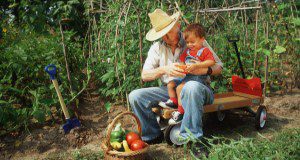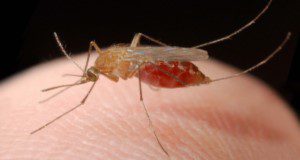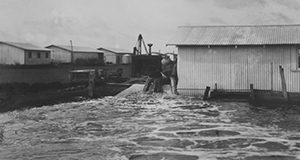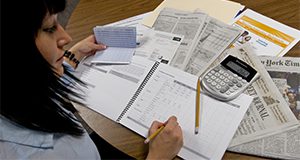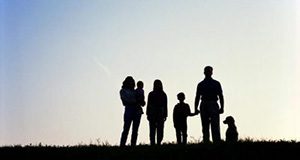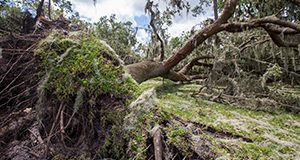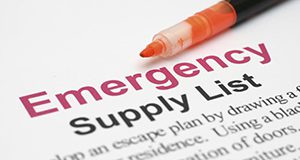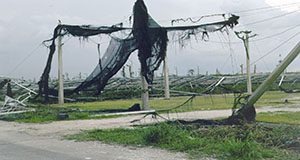This fifth publication in the Road to Recovery series discusses how Extension professionals can evaluate techniques to build trust when facilitating virtual programming. Specific recommendations are provided addressing concerns about short- and long-term virtual trust, inclusion techniques, Zoom fatigue, and cybersecurity. This new 5-page publication of the UF/IFAS Department of Agricultural Education and Communication was written by Colby Silvert, Cody Gusto, John Diaz, and Glenn Israel.
https://edis.ifas.ufl.edu/wc388
Category: Disaster Prep & Recovery
The Road to Recovery #6: Evaluating Virtual Strategies to Build Community Capacity and Resilience
This sixth publication in the Road to Recovery series provides tips and strategies for Extension professionals interested in evaluating efforts to promote community capacity building and community resilience using virtual platforms. This new 5-page publication of the UF/IFAS Department of Agricultural Education and Communication was written by Cody Gusto, Colby Silvert, John Diaz, and Glenn Israel.
https://edis.ifas.ufl.edu/wc385
An Introduction to Utilizing Community Leaders to Expand Resiliency Efforts Following a Disaster
In the southeastern United States, many agricultural, vulnerable, and rural communities (AVRCs) must cope with natural disasters regularly. These natural disasters not only harm communities, crops, and livelihoods, but also can negatively impact the mental health of affected individuals, including those living in AVRCs. The purposes of this new 3-page article are to (1) provide tips on identifying specific individuals who could qualify as community leaders and (2) provide details on how partnering with community leaders can be beneficial for mental health communication and outreach. Written by Lisa Lundy, Jacqueline Aenlle, Ricky Telg, Tracy Irani, Angie Lindsey, Ashley Mcleod-Morin, Michaela Kandzer, and Phillip Stokes, and published by the UF/IFAS Department of Agricultural Education and Communication.
https://edis.ifas.ufl.edu/wc383
Tax Relief in Disaster Situations
This 1-page document provides general information regarding disaster assistance and links to online resources for taxpayers affected by a federally declared disaster. Written by Jorge Ruiz-Menjivar and Heidi Copeland, and published by the UF/IFAS Department of Family, Youth and Community Sciences, revised September 2020.
https://edis.ifas.ufl.edu/fm259
Strategies to Increase Personal Resilience in Disaster Response Efforts
This 3-page publication highlights strategies to help Extension professionals increase their personal resilience in disaster response efforts. Written by Amanda D. Ali, Angela Lindsey, Amy Harder, Lisa Lundy, and T. Grady Roberts, and published by the UF/IFAS Department of Agricultural Education and Communication, May 2020.
https://edis.ifas.ufl.edu/wc360
Using Social Media to Communicate in an Emergency Situation
The Prevent & Protect publication series focuses on the creation of different material formats to resonate with various audiences and ways to maximize their efficacy in communicating risk to the public about mosquito control. This new 4-page publication of the UF/IFAS Department of Agricultural Education and Communication explains how to engage in effective crisis communication and how to effectively use the Prevent & Protect emergency toolkit in a mosquito-related crisis situation. Written by Ashley Mcleod-Morin, Ricky Telg, Phillip Stokes, Alena Poulin, Shelli Rampold, Angela B. Lindsey, and Sandra Anderson.
https://edis.ifas.ufl.edu/wc363
Hurricane Preparedness for Forage Crops in the Southeast United States
This 4-page document provides information on preparing forage crops, conserved forage, and grazing areas for potential hurricane damage and alleviating hurricane damage on forage crops and grazing lands in the Southeast United States, with an emphasis on the Florida peninsula and Gulf Coast. Written by José C. B. Dubeux, Jr. and Edward K. Twidwell, and published by the UF/IFAS Agronomy Department, November 2019.
http://edis.ifas.ufl.edu/ag439
An Overview of Risk Management Planning
As risks evolve and diversify, approaches to conducting business require a targeted focus on risk management, particularly in agriculture. This new 3-page document explores risk in agriculture, the need to understand risk, formation of strategies to manage risk, and government programs that exist to help growers and producers manage risk. Written by Martie Gillen and Beatrice Pierre, and published by the UF/IFAS Department of Family, Youth and Community Sciences, May 2019.
http://edis.ifas.ufl.edu/fy1482
Developing and Managing a Community Outreach and Dissemination (COD) Core for a Multi-Institution Grant Project
This 3-page document is one in the Healthy Gulf, Healthy Communities series, which focuses on research studying the physiological, psychological, and sociological effects of the 2010 Deepwater Horizon oil spill in order to help communities recover and prepare for future potential disasters. Written by Angela B. Lindsay, Nadia Bahadori, and Samantha Goldenberg and published by the UF/IFAS Department of Agricultural Education and Communication, December 2018.
http://edis.ifas.ufl.edu/wc320
Engaging and Empowering Community Resource Organizations (CROs) Before, During, and After Disasters
This 3-page document is one in the Healthy Gulf, Healthy Communities series, which focuses on research studying the physiological, psychological, and sociological effects of the 2010 Deepwater Horizon oil spill in order to help communities recover and prepare for future potential disasters. Written by Angela B. Lindsey and Samantha Goldenberg and published by the UF/IFAS Department of Agricultural Education and Communication, December 2018.
http://edis.ifas.ufl.edu/wc319
Hurricane Impacts on Florida's Agriculture and Natural Resources
Hurricanes are capable of affecting almost everything in their paths. Their strong winds and heavy rains can directly impact both inland and coastal areas in short periods that usually last about a day. This new 10-page document reviews basic facts about hurricanes and their effects in Florida and discusses ways they might affect Florida's agriculture and natural resources. Written by Young Gu Her, Ashley Smyth, Pamela Fletcher, Elias Bassil, Ulrich Stingl, Zachary Brym, and Jiangxiao Qiu, and published by the UF/IFAS Department of Agricultural and Biological Engineering, October 2018.
http://edis.ifas.ufl.edu/ae528
Developing and Strengthening Networks to Promote Resilience After Disasters
The HGHC series includes thirteen publications that focus on the work of the community outreach and dissemination team, including community engagement, outreach, and research result dissemination. This 3-page document focuses on developing and strengthening networks before they are challenged to promote resilience in and after a disaster. Written by Angela B. Lindsey, Samantha Goldenberg, and Cassie Wandersee, and published by the UF/IFAS Department of Family, Youth and Community Sciences, April 2018.
http://edis.ifas.ufl.edu/fy1477
Risk Management for 4-H Youth Development Work: Crisis Management and Emergency Procedures
This 2-page publication is one in the series Risk Management for 4-H Youth Development Work. It focuses on basic overall precautions to be taken by everyone involved with 4-H. Written by Paula Davis, Dale Pracht, Stefanie Prevatt, and Janet Psikogios and published by the UF/IFAS 4-H Youth Development Department, February 2018.
http://edis.ifas.ufl.edu/4h385
Hurricane Preparation List for the Container Nursery
Busy professionals don’t often have time to consider the impact a hurricane can have on their nursery until one is on the way. This 2-page fact sheet provides a list of items and tasks to complete prior to a hurricane’s arrival to minimize damage to the nursery. Written by Tom Yeager and published by the UF/IFAS Environmental Horticulture Department, December 2017.
http://edis.ifas.ufl.edu/ep547
University Zika Preparedness (UF website)

The University of Florida continues to monitor the spread of the Zika virus, working closely with local and state Department of Health officials. This UF website provides a centralized resource for current University of Florida information, including communications, prevention tips, resources, and research.
http://zika.ufl.edu
Freeze Damage Symptoms and Recovery for Citrus

Citrus trees are evergreen, never become fully dormant, and cannot withstand temperatures as low as those tolerated by deciduous trees. But citrus trees can become preconditioned or acclimated to cool air temperatures that occur in late fall and winter. One of the best ways to lessen cold injury and to hasten recovery from cold damage is to maintain healthy trees. This five-page fact sheet discusses the symptoms of freeze damage and ways to help recover trees that have been damaged. Written by Mongi Zekri, Chris Oswalt, Steve Futch, Gary England, Camilly McAvoy, Laurie Hurner, and Parker Platts, and published by the Horticultural Sciences Department.
http://edis.ifas.ufl.edu/hs1250
Consejos para pleanear contra desastres para gente mayor
 FY1462 is the Spanish language version of FY620, Disaster Planning Tips for Older Adults. This 4-page publication offers an abundance of information pertaining to water storage and use, food, first aid, important papers, electronics, medical needs, stress reduction, and evacuation which can help older adults plan for natural disasters and other emergencies. Written by Carolyn Wilken, Linda B. Bobroff, and Emily Minton, and published by the Department of Family, Youth and Community Sciences, May 2003.
FY1462 is the Spanish language version of FY620, Disaster Planning Tips for Older Adults. This 4-page publication offers an abundance of information pertaining to water storage and use, food, first aid, important papers, electronics, medical needs, stress reduction, and evacuation which can help older adults plan for natural disasters and other emergencies. Written by Carolyn Wilken, Linda B. Bobroff, and Emily Minton, and published by the Department of Family, Youth and Community Sciences, May 2003.
http://edis.ifas.ufl.edu/fy1462
Tropical Storm ERIKA Information
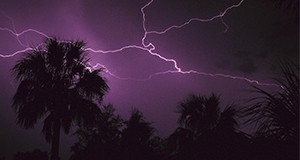 It appears that Florida is in the sights for a tropical storm or hurricane. Although it is still too early to tell what impact Erika will have on Florida communities, now is the time to review hurricane plans, begin preparing, and don’t be complacent. IFAS Extension has put together a variety of information to help in preparing individuals, families, agricultural producers, and communities for these type of natural events.
It appears that Florida is in the sights for a tropical storm or hurricane. Although it is still too early to tell what impact Erika will have on Florida communities, now is the time to review hurricane plans, begin preparing, and don’t be complacent. IFAS Extension has put together a variety of information to help in preparing individuals, families, agricultural producers, and communities for these type of natural events.
- Disaster Prep & Recovery (SolutionsforyourLife.ufl.edu)
- EDIS topics
For official weather information see the National Weather Service National Hurricane Center website
Living with Diabetes: Putting Together an Emergency Preparedness Plan (FCS80007/FY1300)
 People with diabetes need to prepare in advance by having a plan and supply kit ready in the event of an emergency. This 3-page fact sheet describes key concerns that should be considered when developing an emergency plan and putting together a supply kit, and lists the things that should be included in the supply kit. Written by Nancy J. Gal and published by the UF Department of Family Youth and Community Sciences, April 2012.
People with diabetes need to prepare in advance by having a plan and supply kit ready in the event of an emergency. This 3-page fact sheet describes key concerns that should be considered when developing an emergency plan and putting together a supply kit, and lists the things that should be included in the supply kit. Written by Nancy J. Gal and published by the UF Department of Family Youth and Community Sciences, April 2012.
http://edis.ifas.ufl.edu/fy1300
Be Prepared: Tips for Assembling a Low-Cost Disaster Kit (FCS9313/FY1284)
 Being prepared can increase your speed of recovery from severe events such as flooding, drought, tornado, hurricane, winter storms, or even being stranded because of a car problem. According to the Red Cross and FEMA three steps of preparation are: Get a kit. Make a plan. Be informed. While pre-assembled kits are available for purchase, assembling your own can cost less and ensures that the kit includes items that are appropriate to your family’s needs. Remember when planning to include all members of your family including pets. This 2-page fact sheet was written by Elizabeth D. Kiss and Michael S. Gutter, and published by the UF Department of Family Youth and Community Sciences, February 2012.
Being prepared can increase your speed of recovery from severe events such as flooding, drought, tornado, hurricane, winter storms, or even being stranded because of a car problem. According to the Red Cross and FEMA three steps of preparation are: Get a kit. Make a plan. Be informed. While pre-assembled kits are available for purchase, assembling your own can cost less and ensures that the kit includes items that are appropriate to your family’s needs. Remember when planning to include all members of your family including pets. This 2-page fact sheet was written by Elizabeth D. Kiss and Michael S. Gutter, and published by the UF Department of Family Youth and Community Sciences, February 2012.
http://edis.ifas.ufl.edu/fy1284

